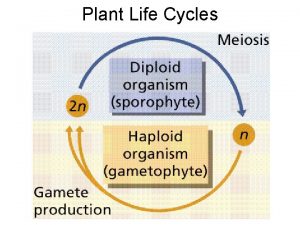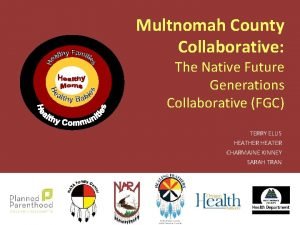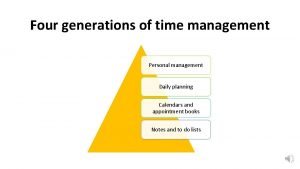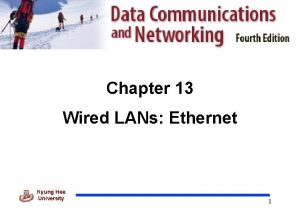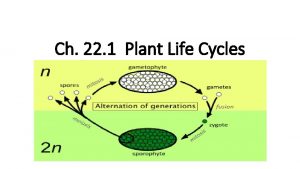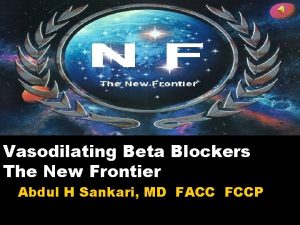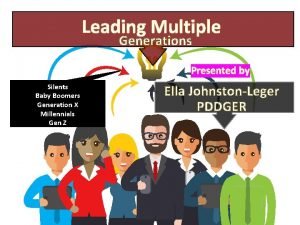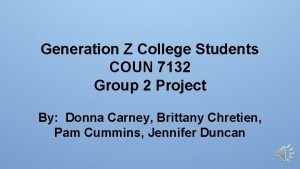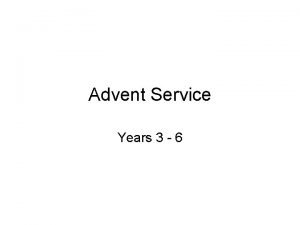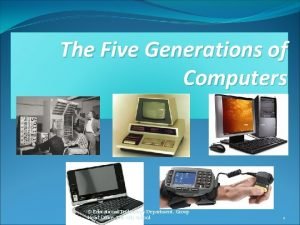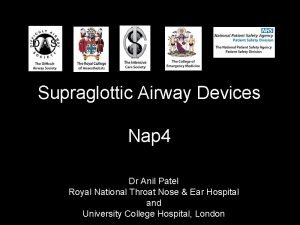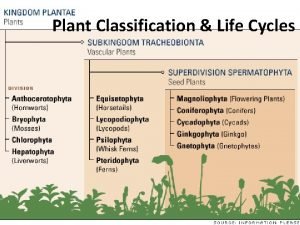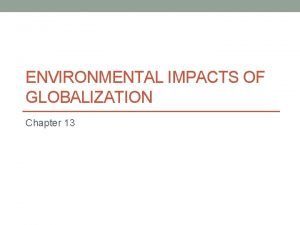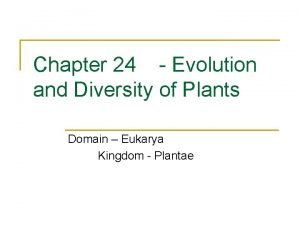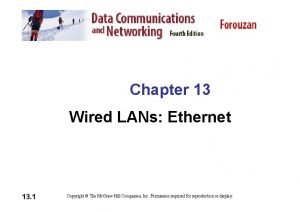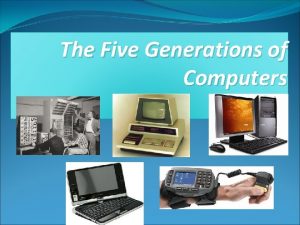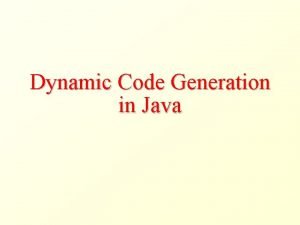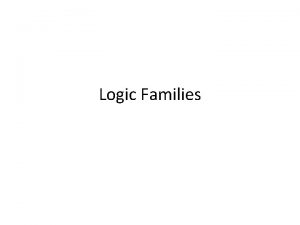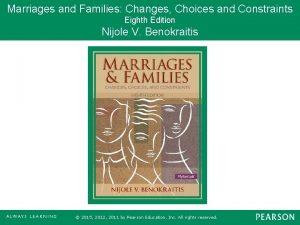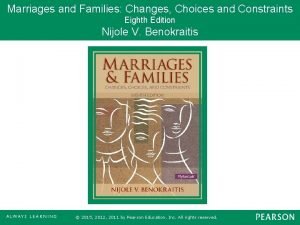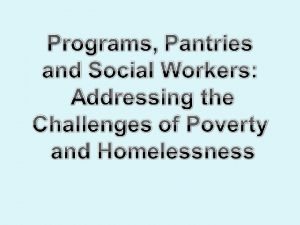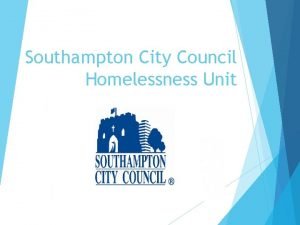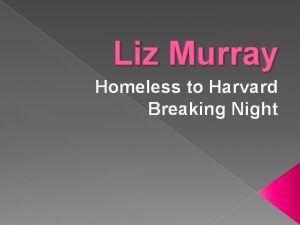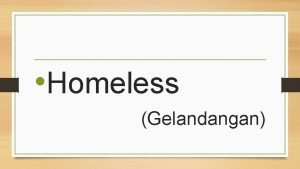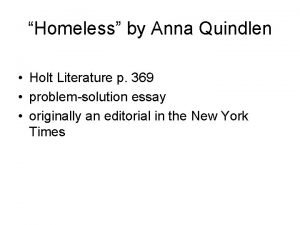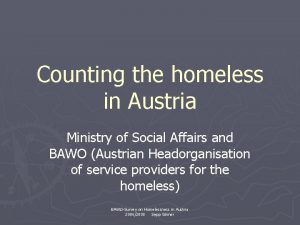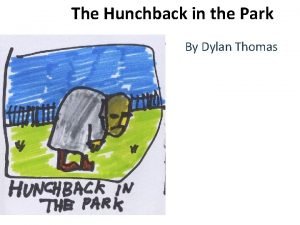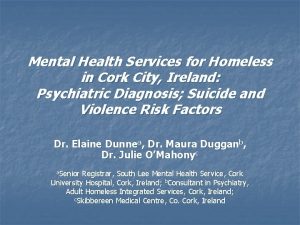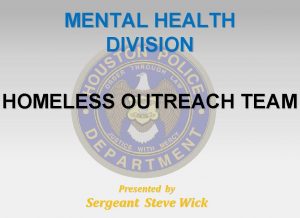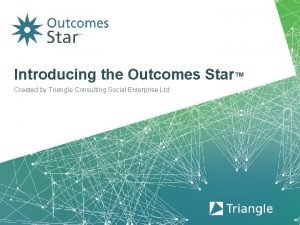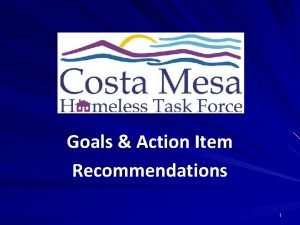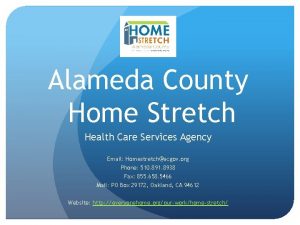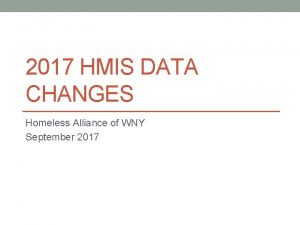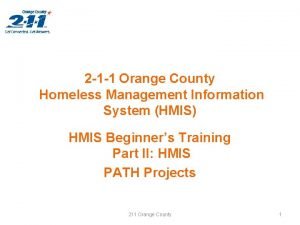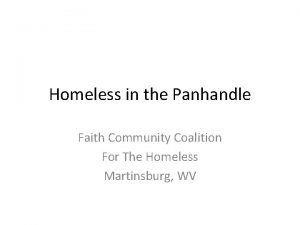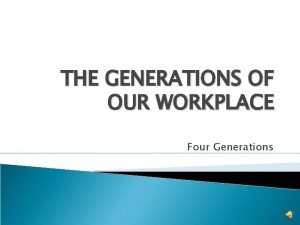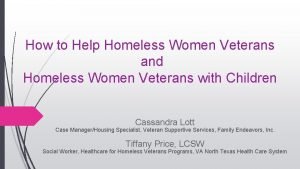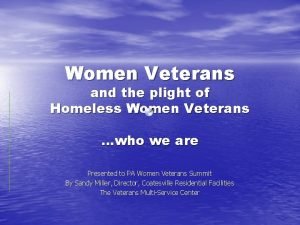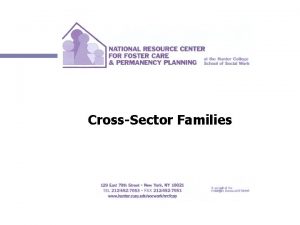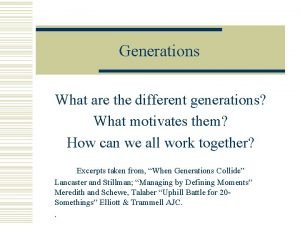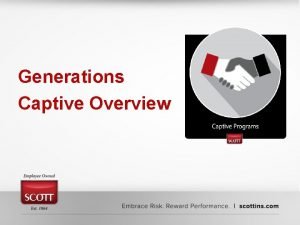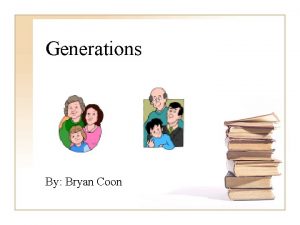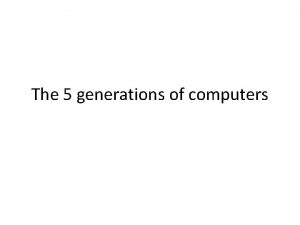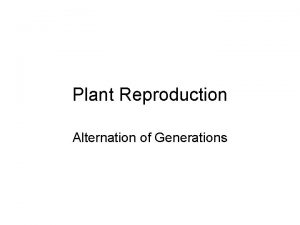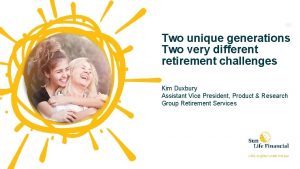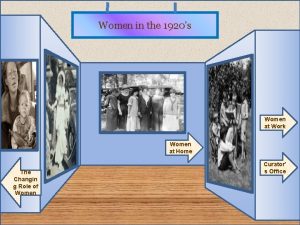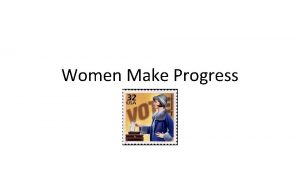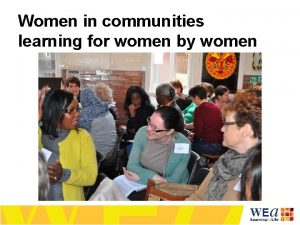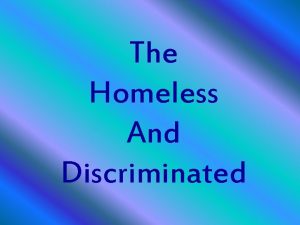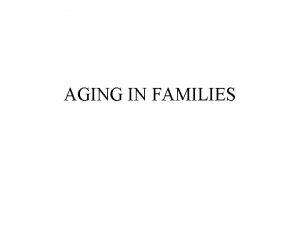Homeless Women and Homeless Families Two Generations at































































- Slides: 63

Homeless Women and Homeless Families – Two Generations at Risk Roya Ijadi-Maghsoodi, MD, MSHPM Lillian Gelberg, MD, MSPH UCLA Departments Of Psychiatry And Family Medicine VA Greater Los Angeles Healthcare System Transdisciplinary Homelessness Research: Measure H And Beyond UCLA, May 24, 2018 1

Goals of Presentation Brief overview of our homelessness research Prevalence of homeless women and homeless families Overview of our research regarding homeless women, past and current Our recent research regarding homeless families 2

Research Setting: Los Angeles County 4, 000 Square Miles 1 10. 1 Million People 2 Race/Ethnicity 49% Latino 27% White 15% Asian/Pacific Islander 9% African American 1. 5% American Indian Over 100 different languages spoken 16% living in poverty 1 www. lacounty. gov 2 Los › Home › Government. Geography & Statistics › LAC Geography & Statistics Details, 2013 Angeles County Quick. Facts from the US Census Bureau. 2016 3

1984 Community Needs Assessment UCLA Venice Family Clinic had just received funding to set up it’s first homeless clinic as part of the RWJF Health care for the Homeless Program Needs assessment was needed I set up a table at the beach and at meal programs, and waited for homeless people to come up to me to ask for medical help Many people came up to my little table 4

Barriers to Care 5 But, many homeless persons with serious health problems were sitting in the corners and were not coming up to me They were sitting alone, had serious venous stasis, and other obvious health problems I didn’t understand why this was so Launched a 30 year career in trying to understand improve homeless and other vulnerable populations’ health, use of health services, and barriers to care As family doctor, I wanted to study homeless families, but my fellowship advisor suggested we start with adults and that I would have a whole career to get back to families, which we have finally done!

1. 2. 3. 4. 5. 6. 7. 8. 9. 10. 11. 12. 13. 1986, Health of the Homeless (VA HSRD) 1987 -1989, Health of the Homeless (VA AHRQ) 6 1991 -1995, Physical Health and Medical Care in a Homeless Cohort (AHRQ) 1994 -1997, Decision-Making Regarding Drug Use Among Homeless Women (NIDA, PI Nyamathi) 1994 -2000, Health Promotion Among Homeless Women at Risk for AIDS (NIMH, PI Nyamathi) 1995 -2001, Access to Care for Homeless Women of Reproductive Age (AHRQ, RWJF) 1998 -2003, TB/HIV Risk Reduction with Homeless and Drug Addicted (NIDA, PI Nyamathi) 2000 -2002, Hepatitis C Among Health Care for the Homeless Program Patients, HRSA 2001 -2002, Primary Care Program for the Homeless and At-Risk Veterans. Clinical Initiatives Program (VA, PIs Mc. Guire, Rosenheck) 2001 -2005, Hepatitis B and C Among Homeless Adults (NIDA) 2001 -2005, HBV, HCV, and HIV Medical Follow-Up Care among Homeless Adults, CDC 2001 -2007, Homeless Women: Drugs, Race/Ethnicity, and Health Care (NIDA) 2002 -2006, Alcohol and Homeless Women’s Use of Health Services (NIAAA)

11. 12. 13. 14. 15. 16. 17. 18. 22. 23. 24. 2003 -2008, HBV Prevention for Homeless At-Risk for HBV/HCV/HIV (NIDA, PI Nyamathi) 2004 -2005, Assessing and Addressing Homelessness among Women Veterans to better 7 meet their Gender Specific Needs (VA HSRD, PI Washington) 2007 -2010, Intervention to Improve Expression of End of Life Preference for Homeless Persons (NINR, PI Song) 2007 -2011, Improving NRT Adherence and Outcomes in Homeless Smokers (NHLBI, PI Okuyemi) 2007 -2009, Open. MRS in LA, an electronic information system that serves as a registry of homeless patients (LA Care, PI Gregerson) 2008 -2010, Protecting the Homeless Via Shelter Tobacco Control Policies (Calif TRDRP, PI Mc. Carthy) 2011 -2012, Helping Homeless Shelters Become Smoke-Free (CDC, PI Mc. Carthy) 2012 -2013, Homeless Patient Aligned Care Teams (H-PACT) (VA, PIs Altman, Gelberg) 2014 -2015, Improving Patient Engagement in VA Supportive Housing (VA HSRD, PI Gabrielian) 2014 -2017, Substance Abuse, Mental Health, and Health among Homeless Women in Primary Care (NIAAA, PIs Upshur, Weinreb) 2015 -2017, The Humanism Pocket Multi-Tool: Special Techniques for Clinicians and Trainees for Caring for Homeless Patients (Gold Foundation, PI Shaner)

25. 26. 27. 28. 29. 30. 31. 32. 33. 2015 -2019, Interprofessional teamwork and training to improve primary care for homeless Veterans in the VA HPACT (COE IA-HPACT) (VA, PI Warde) 8 2015 -present, VAGLA HCV SCAN-ECHO: Increase access to Hepatitis C treatment for Homeless and Housed Veterans (VA, PI Altman) 2016 -2017, Exploring Exits From Homelessness for Veterans with Serious Mental Illness (VA HSRD, PI Gabrielian) 2017 -2018, Improving Recovery and Community Re-Engagement in the Department of Housing and Urban Development-VA Supportive Housing (HUD-VASH) Program (VA NCHAV, PI Gabrielian) 2017 -2022, Improving Housing Outcomes for Homeless Veterans (VA HSRD, PI Gabrielian) 2016 -2020, Homeless Families Based Interventions to Reduce Substance Use and Build Resilience (NIDA, PI Ijadi-Maghsoodi) 2016 -2020, Improving Quality of Primary Care Provided to Homeless Veterans (VA HSRD, PI Kertesz 2016 -2021, Addressing Homelessness and Substance Use in Emergency Department Patients (NIDA, PI Doran) 2018 -2023, Measuring the Impact of the Supportive Services for Veteran Families (SSVF) on Veteran outcomes (VA HSRD, PI Nelson)

June 1992 9

If we send homeless persons for health care, will they go? AHRQ, Physical Health and Medical Care in a Homeless Cohort (1991 -1995) Project Predictors of use of services and change in health status 4 conditions TB, HTN, Visual Acuity, Skin/Leg/Foot Problems Screened 10 and referred for medical care Face-to-face interviews and screening physical examinations in public settings Model Development – Behavioral Model for Vulnerable Populations (Gelberg et al. , 2000) Results Homeless people will go for health care, if it is available (90%)

Behavioral Model for Vulnerable Populations 11

12 Homeless Women

Why Homeless Women? When we think of homelessness, we generally think of men living on the streets Research to this point had focused on homelessness among single men Women had become the fastest growing segment of the homeless population Yet, little attention was being paid to homeless women, and little was known about their health or health care needs We will first present some of our findings on our studies of homeless women and will then present findings from one of our junior investigators regarding homeless families, most of whom are headed by women 13

14 Homeless Adults Media depiction of homeless individuals

Homeless Women and Families Yet many women and their families are invisible to the public, media, and policy makers 15

16 Women Experiencing Homelessness A 2017 point-in-time count National: 39% (214, 709) of people experiencing homelessness were women 1 Los Angeles: 17, 882 This women in Los Angeles County experiencing homelessness 2 represents a 16% increase since 20162 Women accounted for 31% of persons experiencing homelessness on any given night in Los Angeles 2 12017 22017 Annual Homeless Assessment Report to Congress Greater Los Angeles Homeless Count (LAHSA)

What are the health needs, vulnerabilities and access to care for homeless women? AHRQ/ RWJF, Access to Care for Homeless Women of Reproductive Age (1995 -2001) Project Community – based probability survey of 924 homeless women in 66 shelters and meal programs in LA County Mixed Methods (quantitative and qualitative) Results High rates of mental, physical, and substance abuse problems (Gelberg et al 2004, Austin et al 2008) Highest pregnancy rates, as well as rates of premature deliveries and low birth weight babies in world, especially among African American homeless women (Stein et al, 2000) (Weathering Hypothesis, AT Geronimus) Low access to health care and contraception (Gelberg et al 2001, 2002, 2007, 2009; Lim et al. 2002) 17

If we screen, identify, and refer, will there be primary care facilities set up to care for the homeless women? 18 AHRQ Provider Survey: Potential Sources of Primary Care for Homeless Women (1996 -2000) Project Surveyed all medical directors and a random sample of clinicians in each clinic that could provide primary care to homeless women in Los Angeles County Identified clinic structures and processes of care conducive to care of homeless women Funding AHRQ Minority Supplement Results Most facilities don’t screen for homelessness Most homeless women don’t tell their providers that they live in a homeless situation for fear of discrimination (Luck et al, 2002)

Are there ethnic disparities among homeless women? 19 NIDA & NIAAA, Homeless Women: Substance Abuse, Race/Ethnicity and Health Care (2001 -2005) Project: Secondary analysis – 974 homeless women Results African-American 56%, Latina 26%, White 16% Poor white homeless women had worse health and health care, compared to ethnic/minority homeless women (Gelberg et al. ): sexual abuse in childhood, physical abuse recently and in childhood, lifetime mental health hospitalization, serious medical symptoms, lack of a regular source of care, recent hospitalization (Gelberg et al, 2009)

What are Homeless Women’s Unmet Needs regarding Substance Abuse, Mental Health, and Health in Primary Care? 20 NIH/ NIAAA (2014 -2017): C Upshur (PI), L Weinreb (PI), L Gelberg (co-I) Aim of the study: To obtain a more current and representative sample of homeless women and the prevalence and predictors of substance use disorders and co-morbidities among women seeking primary care at Health Care for the Homeless clinics across the US Setting: 295 Health Care for the Homeless Program Organizations in the US (funded by HRSA). 11 HCH participated, geographically distributed 750 homeless women (18 -64), speak Spanish or English Sampled with probabilities proportional to site size

Homeless Women 21 Homeless Women have high rates of: Mental health problems: depression 69%, PTSD 45%, bipolar 33%, psychosis 23% Risky substance use, past year: tobacco 54%, AUD 17%, DUD 24% Intimate partner violence exposure (ever): physical abuse 63%, sexual abuse 49% Survival sex ever 31% > ½ interested in getting help through their PCP for their alcohol and drug problems Women voiced the need for a: Primary care-based, gender-focused, group support program with “whole woman” approach Not simply focused on risky substance use, but one that also addresses challenges associated with exposure to violence and trauma, and helps them to maintain sexual and personal safety in the context of homelessness

Homeless Families Research by junior investigator, Roya Ijadi. Maghsoodi on Homeless Families 22

23 “You Don’t Get Much of a Childhood: ” Homeless Families in LA County

Team Members and Mentors Gery Ryan, Ph. D—RAND Health Sheryl Kataoka, MD, MSHS—UCLA Center for Health Services and Society Lillian Gelberg, MD, MSPH—UCLA Department of Family Medicine/VA Greater Los Angeles Healthcare System Patricia Lester, MD—UCLA Division of Population Behavioral Health Norweeta Milburn, Ph. D—UCLA Division of Population Behavioral Health Kayleen Ports—UCLA Division of Population Behavioral Health Michelle Quan—UCLA School of Medicine John Horton—UCLA School of Medicine 24

AACAP/National Institutes of Drug Abuse K 12 Career Development Award in Substance Abuse: Project Aims Aim 1. To describe the unique family needs of youth and family members in homeless families with a recent history of parental substance use disorders (SUDs) Aim 2. To adapt a family intervention for homeless families with parental SUDs, using qualitative interviews and focus groups, to improve parental mental health, and prevent poor mental health outcomes among youth 25

Background: Prevalence of Homeless Families • Families =1/3 of U. S. homeless population 1 • 57, 971 families in 2017 PIT Count 26 Homeless Families in the U. S. • 2017 LA PIT=8, 529 people in homeless families (29% increase) 2 Homeless Families in L. A. • 2017 LA PIT=1, 779 people in homeless families were in transitional housing Transitional Housing in L. A. • Total of 57, 000 housing vouchers in use, 2, 400 of these become available every year • 187, 804 applications were received for 20, 000 spots on the waiting list in 2017 Vouchers in L. A. 12017 Annual Homeless Assessment Report to Congress Greater Los Angeles Homeless Count (LAHSA) 3 Housing Authority of the City of Los Angeles 22017

Homeless Families Experience Significant Stressors 27 Daily stressors of caring for family members Racism/discrimination Trauma Substance use Poor health Separation from social connections (Bassuk et al, 1987; Biel, 2014; Haber, 2004)

“When I first had to move, I had to stay with a friend. Her landlord was like, ‘Well, they're not on your lease. So you have to put them out. ’ They was like, ‘Well, you have a decision. Are you going to stay here and get your kids taken away or are we taking you to a shelter? ’ We went to [facility] and there was a lot of stuff going on. So after maybe two, three weeks we was there, somebody got killed downstairs. 1 Path to Homelessness 28 2 3 4 5 6 I got a place and the place wasn't right for my baby, she came up with lead poisoning. So the doctor was like, ‘Well, I have to call the people out on you. ’ My decision was I cannot get my kids taken away… and I was like, ‘Hey, just take us to the shelter. ’ So, I'm like, ‘Okay, we're going to go to a room. ’ So I cleaned out my whole savings and went to a room [motel]. ” –Mother

2 1 “I was staying with my mom and my sister. My mom stopped paying rent. My sister moved out. And we were staying in a onebedroom and the rent was $1000 and I couldn't do it by myself. So, that's what made me become homeless. Path to Homelessness 29 3 It was hard to explain to a 9 -year-old, why we had to move to a shelter and have to keep living from place to place. He was like, ‘Hey Mom, I've been to three schools already. When are we going to settle in and not move me to no more schools? ’” -Mother

30 Homeless Children are at Risk for: Poor health Mental health problems Substance Out use of home placements Academic Later failures homelessness (Zima et al, 1996; Buckner et al, 1999; Bassuk, 1987; Bassuk, 2015; Yoshikawa, 2012)

Research Aim: Adapting and Piloting a Family. Based Program (FOCUS) for Homeless Families with Parental SUDs Within Transitional Housing 6 -8 session family preventive intervention Found to improve youth depression, anxiety, coping, and family functioning Goal to decrease family stress and improve mental health and coping among high-risk youth in homeless families with parental SUDs (Lester et al, 2012; Lester et al, 2016) 31

FOCUS (Families Overcoming Under Stress) Program Core Elements Trauma-informed family-based preventive program 6 -8 sessions with families Family check-in, psychoeducation, narrative timeline, and five resilience skills: Emotion regulation Problem solving Communication Managing reminders Goal setting 32

Why Family-Based Preventive Programs for Homeless Families are Needed Children exist within a family system Supportive and responsive parenting is the strongest protective factor for children exposed to adversity (Luther, 2006) 2009 IOM report on preventing mental health problems in youth called for family interventions to strengthen parenting (O'Connell, Boat, & Warner, 2009) Federal Strategic Plan to Prevent and End Homelessness call for integrated behavioral health services for homeless families Lack of evidence-based family programs specifically for homeless families 33

Aim 1 Methods: Qualitative Interviews to Inform Adaptation 34 Participants (n=56) Homeless parents with a history of alcohol or substance use disorders (based on DAST or AUDIT screening) (n=16) Homeless youth in the families between ages of 10 -18 (n=15) Homeless services providers (n=25) Recruited from facilities throughout Greater Los Angeles Procedures Brief demographic questionnaire Semi-structured qualitative interview Transcripts were audio-recorded, transcribed, and analyzed using content analysis

Trauma Macrosystem Childhood Affected 35 Mesosystem Your text here Individual *model based on Bronfenbrenner's ecological theory Microsystem Parental Substance Use Path into Homelessness

Findings from Qualitative Interviews with Homeless Families and Providers 36

Provider Demographics Average of providers was 40. 6 years 92% identified as female, 8% as male 32% identified as Latino, 32% as Black/Not Latino, and 28% as Caucasian/Not Latino The average length of time that providers had been working at their facility was 4. 3 years The average length of time that providers had worked with homeless families was 7. 5 years 37

Family Demographics Parent Participants (N=16) Median length of current homelessness episode for families was 12 months 37. 5% of parents identified as Caucasian/Not Latino, 37. 5% as Black/Not Latino, 12. 5% as 2+Races/Not Latino, and 12. 5% as Latino Average was 40 years (range: 25 -52) Parents had an average of 3. 4 children in their custody (range: 1 -8) The children ranged from ages 0 -17 years Child Participants (N=15) Average was 13. 5 years (range: 10 -17) 53% were female, 47% were male 33. 3% identified as Caucasian/Not Latino, 40% as Black/Not Latino, 6. 7% as 2+ races/Not Latino, and 20% as Latino 38

Structural Stressors Families Encountered Lack 39 of Affordable Housing “My mom got Section Eight and we probably would’ve gotten a place. But one of the big interruptions is that here, there’s not a lot of Section Eight people that take it. ” -Child “I’ve applied for Section 8, still haven’t got my voucher. I did get approval for the subsidized housing, but every apartment that I find, they don’t take subsidized housing. ” –Parent “Have a database created with landlords who are willing to accept the homeless. ” -Parent

Structural Stressors Stigma “Fair housing needs to be a law. There needs to be a law for “everyone gets a chance. ” –Parent 40

Structural Stressors Some 41 Need Longer Term Housing and Assistance “She found me an apartment the same day I got accepted here. But six months down the road, I would have to pay the full rent, which would have been $1250. I didn't know what my income was going to be with all the kids. So I didn't want to set myself up for $1250 rent. Six months down the road would have been January and I had my baby in December. ” -Parent

Structural Stressors Need 42 for More Time in Transitional Housing for Some “You cannot get back on your feet in four months. You can’t. A lot more people leave here [transitional housing program] homeless than they do housed. Giving families more time to get stuff together, it would help them out a lot. ” –Parent “I think we still need it [transitional housing] because that was a good way to help people that have been on the streets. They need to take them off the streets for 24 months, train them, help them, support them, and then work with them during that time for permanent housing. Now with the rapid re-housing, where are you going to put them? You can’t get anyone housed in 90 days. It’s impossible. ” –Provider (20 years experience)

Structural Stressors Feeling Spread Thin Families “A 43 wanted more support from case management. lot of us moms, we feeling down, like we at the bottom. I’m looking at the requirements that they require you here. Your room have to be clean all the time, you have to participate in community service, you have to volunteer for this…you have to do that. Going down the list of all the things that we required to do, normal people out there, you know that’s not homeless, isn’t doing that on the daily. ” -Mother

Family Stressors: Communication 44 Communication barriers included past trauma, separations from children, parental guilt, and difficulty talking about the homelessness experience “What gets in the way [of communication] is the past… we always bring up the past, like ‘Oh remember this happened? ’ And then that’s when the arguments start happening. ”-Child “I think we need counseling. That would help make us a lot stronger. I think we do need to bring all this up so we can be okay…I need to work on letting go of all my guilt as well. ” –Parent

Family Stressors: Need for Parenting Support “Being 45 homeless is really hard. It’s like you gotta keep a smile on your face. You gotta pretend everything is okay, even though it’s not. And it’s like to instill in your kids if you work and you try hard, you can accomplish what you want to. But life can still throw lemons at you. And you gotta be ready for them. ” –Mother

Family Stressors: Goal-Setting Both youth and parents in the interviews were focused on the goal of housing Many had trouble articulating their own goals and goals for the family “To get a house…She (mother) has to push herself to get a job. She has to do this. We have to help her get there, to reach the goal, to not get homeless again. ” -Child 46

Adapting FOCUS for Homeless Families Intervention Component Narrative Timeline Goal Setting Communication 47 FOCUS for HF Narrative Timeline Family Shared Identity Project Family Goals Also incorporate long-term housing goals and youth goals Communicating within the family Adapt to communicating about past events and prevention of substance use and risky behaviors All sessions *Tailor each skill to address case management needs if applicable All sessions *Incorporate examples relevant to homeless families living within transitional housing

Recommendations 48 Homeless families experience structural stressors (housing barriers, need for case management) and family stressors related to being homeless Essential to address BOTH of these needs Providers and families interviewed felt that many families need longer term options for housing and support Important family processes, such as communication, are affected by homelessness and stressors leading to homelessness Establishes housing need for a family-based intervention in transitional

Conclusions: Homeless Women Homeless women have complex array of physical, mental, substance use, and social health problems, in the context of lack of housing, gender-based violence, social isolation, and lack of healthy social support Homeless women are requesting a primary care-based, gender-focused, group support program with “whole woman” approach Next Steps Proposal under review to do this for homeless women! 49

Conclusions: Homeless Families Rapid rehousing with 6 months coverage is insufficient for many homeless families who are facing long-term economic insecurity and can’t commit to housing with rents they know they cannot pay for after the 6 months support is up Implement and pilot test the adapted family resilience intervention: FOCUS for Homeless Families (FHF) 50

Contact LILLIAN GELBERG, MD, MSPH PROFESSOR, UCLA DEPARTMENT OF FAMILY MEDICINE, FSPH HEALTH POLICY AND MANAGEMENT, VA GLA LGELBERG@MEDNET. UCLA. EDU ROYA IJADI-MAGHSOODI, MD, MSHPM ASSISTANT PROFESSOR, DIVISION OF POPULATION BEHAVIORAL HEALTH, UCLA DEPARTMENT OF PSYCHIATRY, VA HSR&D CENTER FOR THE STUDY OF HEALTHCARE INNOVATION, IMPLEMENTATION & POLICY RIJADIMAGHSOODI@MEDNET. UCLA. EDU 51

52 Extra

Results Microsystem Path into Homelessness Trauma Parent substance use Childhood affected Mesosystem Housing Barriers Experiences with Services/Case Management Family Processes Exosystem—Recommendations Homelessness Policies Supporting Families 53

Why Concentrate on Homeless Families as a Child Psychiatrist? Children exist within systems and are subject to a range of protective and risk factors Decades of research demonstrate the adverse effects of homelessness among children Yet there a dearth of family-focused interventions for homeless families 54

A Gap in Family Services Typical family interventions consist of case management provided in housing programs Research demonstrates a need for parent support programs for homeless families There a lack of evidence-based family interventions 55

Interview Guide Topics—Parents and Youth 1. Experience with stress 2. Coping with stress, including use of alcohol and drugs (parents) 3. Needs of the family (services and family processes) 4. Experiences with services and barriers to services 5. Thoughts on a family intervention 6. Speaking to youth about substances and alcohol 7. Recommendations to help other families and for improving the intervention 56

Interview Guide Topics—Providers 1. Main stressors that homeless families with SUDS face 2. Coping with stressors among families 3. Parenting strengths and challenges 4. Thoughts on family processes 5. Services and barriers to services among homeless families 6. Thoughts on intervention adaptation and implementation 7. Recommendations to improve services 57

Data Analysis Interviews audio-recorded and transcribed Method: Content analysis to explore main topics • Team reviewed transcripts to preliminarily code domains of inquiry • Two team members conducted independent coding and met to review initial codes and agree on consensus codes • Team refined coding scheme by expanding, collapsing, and eliminating codes through iterative discussion • Codes developed into consensus themes • Codes managed with Dedoose 58

Case Management/Spread too Thin 59 Families described feeling stretched thin with all of their requirements trying to find housing. Families “A wanted more support from case management. lot of us moms, we feeling down, like we at the bottom. I’m looking at the requirements that they require you here. Your room have to be clean all the time, you have to participate in community service, you have to volunteer for this…you have to do that. Going down the list of all the things that we required to do, normal people out there, you know that’s not homeless, isn’t doing that on the daily. ”

Provider Demographic Survey Results (N=25) MEAN Age (years) 8 8% % RANGE 40. 16 20 -72 Time with current agency (years) 4. 3 0. 1 -21 Time working with homeless (years) 7. 5 0. 5 -35 92% Race/Ethnicity Latino 32% Black/Not Latino 32% Caucasian/Not Latino 28% Asian/Not Latino 4% 2+races/Not Latino 4% 60

Provider Demographic Survey Results (N=25) Highest Level of Education ROLE AT AGENCY N % Program Manager 9 36% Case Manager 6 24% Childcare 4 16% Executive Director 2 8% Chaplain 1 4% Mental Health Provider 1 4% Finance Manager 1 4% Receptionist 1 4% 61 Doctoral Degree 4% High School Diploma/GED 32% Associate's Degree 4% Bachelor's Degree 20% Master's Degree 40%

Parent Demographic Survey Results (N=16) MEAN RANGE Age (years) 40 25 -52 Number of children in parent custody 3. 4 1 -8 Age range of children RACE/ETHNICITY • Average length of current homelessness episode for families was 27 months (range: 5 -108 months) [CATEGOR Y NAME] [VALUE] 0. 6 -17 [CATEGORY NAME] [VALUE] % Latino 12. 5% Black/Not Latino 37. 5% Caucasian/Not Latino 37. 5% 2+races/Not Latino 12. 5% 62 • 25% of participants reported that they currently lived with a significant other Marital Status [CATEGOR Y NAME] [VALUE]

Child Demographic Survey Results (N=15) 63 Average Age: 13. 5 years Race/Ethnicity % Latino 20% Black/Not Latino 40% Caucasian/Not Latino 33. 3% 2+races/Not Latino 6. 7% • Average for youth was 13. 5 years (range 10 -17) • Average grade was 8 th grade (range 5 th-11 th) Female 53% Male 47%
 Big families vs small families
Big families vs small families The fearful passage of their death-marked love
The fearful passage of their death-marked love What are the two families of simple machines
What are the two families of simple machines A plant's life cycle alternates between and generations.
A plant's life cycle alternates between and generations. Plant life cycles and alternation of generations
Plant life cycles and alternation of generations Todays generations
Todays generations Types of switching
Types of switching Wet bonding vs dry bonding
Wet bonding vs dry bonding Autosomal recessive pedigree
Autosomal recessive pedigree Pedigree representation
Pedigree representation Future generations collaborative
Future generations collaborative Four generations of time management
Four generations of time management Alternation of generations
Alternation of generations Generations overview
Generations overview Four generations of ethernet
Four generations of ethernet Alternation of generations in plants
Alternation of generations in plants Inspire future generations
Inspire future generations Generations of beta blockers
Generations of beta blockers Generations
Generations Let's preserve it for future generations
Let's preserve it for future generations Generations in order
Generations in order Third generation computers advantages disadvantages
Third generation computers advantages disadvantages 1995 generation
1995 generation Ethernet evolution through four generations
Ethernet evolution through four generations Come lord jesus come and be born in our hearts
Come lord jesus come and be born in our hearts Five generation of computer
Five generation of computer Ethernet evolution through four generations
Ethernet evolution through four generations Message routing schemes in computer architecture
Message routing schemes in computer architecture Famous rotarians
Famous rotarians Unit 1 generations
Unit 1 generations Overlapping generations model
Overlapping generations model Generations of supraglottic airway devices
Generations of supraglottic airway devices Alternation of generations
Alternation of generations Sustainable development future generations
Sustainable development future generations Free robux roblox robux generator
Free robux roblox robux generator Alternation of generations
Alternation of generations First ethernet
First ethernet Hvad er bioethanol
Hvad er bioethanol Sustainable development future generations
Sustainable development future generations Nicolas generations
Nicolas generations 5th generation of computer
5th generation of computer Dynamic class loading java
Dynamic class loading java What are the characteristics of logic families
What are the characteristics of logic families Compare and contrast the bach and marsalis families
Compare and contrast the bach and marsalis families Compare and contrast the bach and marsalis families
Compare and contrast the bach and marsalis families Marriages and families changes choices and constraints
Marriages and families changes choices and constraints Marriages and families changes choices and constraints
Marriages and families changes choices and constraints Chris gardner
Chris gardner Southampton city council homeless
Southampton city council homeless Resolution of homeless to harvard
Resolution of homeless to harvard Homeless artinya
Homeless artinya Homeless by anna quindlen
Homeless by anna quindlen Homeless in austria
Homeless in austria Dylan thomas the hunchback in the park
Dylan thomas the hunchback in the park Homeless shelters southend
Homeless shelters southend Homeless services cork
Homeless services cork Hpd homeless outreach team
Hpd homeless outreach team Outcomes star system
Outcomes star system Costa mesa homeless
Costa mesa homeless Homestretch alameda county
Homestretch alameda county Homeless alliance of wny
Homeless alliance of wny Chronically homeless orange county
Chronically homeless orange county Thomas benjamin kennington homeless
Thomas benjamin kennington homeless Homeless coalition martinsburg wv
Homeless coalition martinsburg wv




